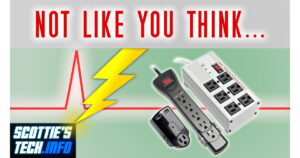To provide the best experiences, we and our partners use technologies like cookies to store and/or access device information. Consenting to these technologies will allow us and our partners to process personal data such as browsing behavior or unique IDs on this site and show (non-) personalized ads. Not consenting or withdrawing consent, may adversely affect certain features and functions.
Click below to consent to the above or make granular choices. Your choices will be applied to this site only. You can change your settings at any time, including withdrawing your consent, by using the toggles on the Cookie Policy, or by clicking on the manage consent button at the bottom of the screen.
The technical storage or access is strictly necessary for the legitimate purpose of enabling the use of a specific service explicitly requested by the subscriber or user, or for the sole purpose of carrying out the transmission of a communication over an electronic communications network.
The technical storage or access is necessary for the legitimate purpose of storing preferences that are not requested by the subscriber or user.
The technical storage or access that is used exclusively for statistical purposes.
The technical storage or access that is used exclusively for anonymous statistical purposes. Without a subpoena, voluntary compliance on the part of your Internet Service Provider, or additional records from a third party, information stored or retrieved for this purpose alone cannot usually be used to identify you.
The technical storage or access is required to create user profiles to send advertising, or to track the user on a website or across several websites for similar marketing purposes.
 With everything getting more expensive these days, you want to be sure your costly electronics stay protected.
With everything getting more expensive these days, you want to be sure your costly electronics stay protected.




Great video, very educational. After the Greenwave filter+generator incident I recently commented about, I’ve been wondering how surge suppressors work and how they fail. I now know what fried thyristor smells like. Mmmmmmm fried thyristor. 🙂
I have five that fried and became open circuits. Some others that smelled fried but are still working. I understand after watching this that those should be replaced too . I just received a few replacements (amazon is so slow this time of year) and first got my office back up and running. The good news is devices in the office seem to all work so the surge suppressors did their job. Next step the family/TV room. Fingers crossed.
The product most often damaged by bad quality electricity are … light bulbs. I wonder that damaged LED light bulbs can still work as DE filter?
Surge protectors was popular in 80s and 90s when CRT monitors were conected to PC central unit and computers costs 1000 dolars. Nowadays we live in cheap electronics from China universe but we don’t use surge protectors anymore. Maybe quality of electricity in big cities are better than in province???
I noticed that one-dollar shops sells cheap 1 watt neon night lamp. I wonder does it could be used as cheap dirty electricity filter.
I opened a bunch of fried surge protectors and they all had one way screws as well. An automatic center punch to make two indentations in the smooth/curved parts of the screw head and a snake-eye spanner bit quickly did the trick every time.
As for why these screws are used in the first place probably has nothing to do with protecting the little intellectual property inside. In North America these devices typically come with a large $$$ connected equipment warranty. An attempt to fraudulently get a damaged electronic gizmo refunded by tampering with and blaming the unrelated surge protector would be exposed by the scratched one-way screws and surrounding plastic.
Aha! That makes more sense.